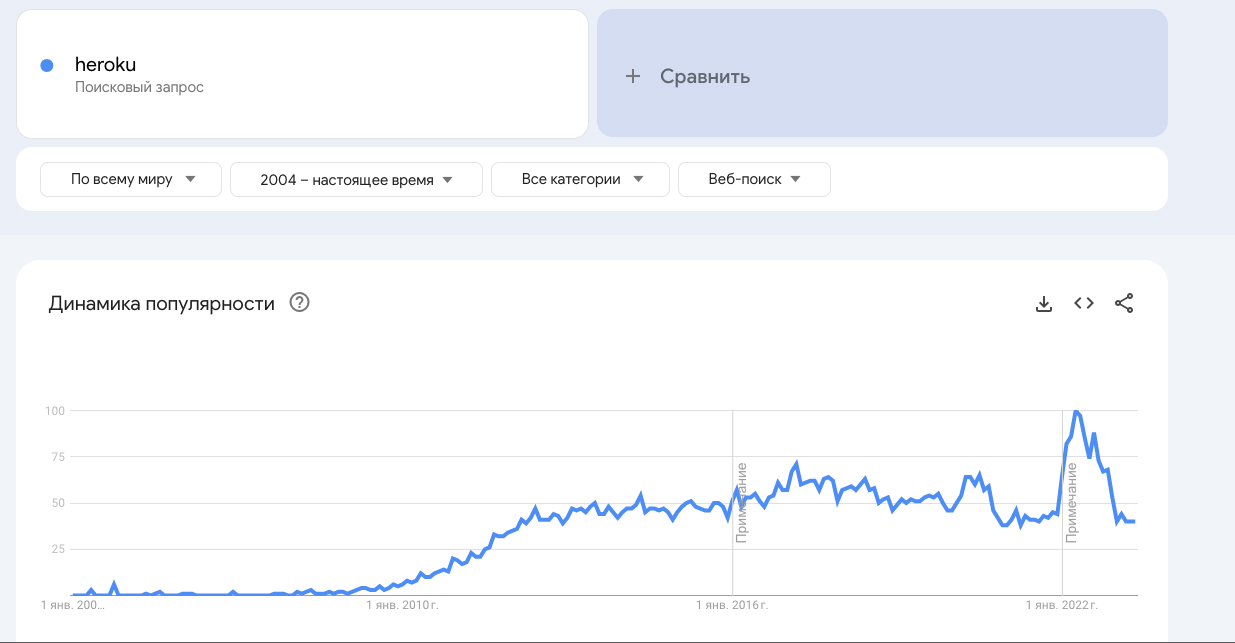Heroku history. Rise and sunset
History has quite a few companies that have made a real revolution and changed their view of what technology should be. And one of those companies is definitely Heroku.
To understand how revolutionary their approach was, let’s just remember what Heroku created in 2007-2011. I can name at least 3 things – containers, serverless, and code delivery via GIT push. In many ways, the modern technology landscape was inspired by the Heroku solutions that saw the light of day 15 years ago.
In this article, I want to talk about the history of the company and the reasons for the loss of “former greatness” today.
The beginning of the Heroku story
In 2007, three Ruby developers — James Lindenbaum, Adam Wiggins, and Orion Henry — founded Heroku. At first it was a code editor in the browser. The project caused a “WOW effect”, but did not involve users much. With this project, the founders even passed Y Combinator. In the course of finalizing the platform, the developers made, as it seemed to them then, a secondary feature – the ability to deploy applications from the master branch of the linked GitHub. The goal was simple – to enable developers to immediately understand how their code works. Why did the feature seem minor? At that time, GitHub had just appeared, and integrating with it was far from an obvious idea.
But one day, while analyzing how users use the project, the founders of Heroku noticed that many customers only use the GIT push feature to deploy applications. And from that moment a new page of service development began.

Pivot and growth
Adam Wiggins (CTO Heroku) admitted that partly they were just in the right place at the right time. The community of developers writing in Ruby was actively growing (Heroku started with this language). Deploying applications on Ruby on Rails was very difficult, as the technological landscape was different (AWS, DigitalOcean, etc. were just emerging). And the very concept of serverless and containers did not exist yet. The ability to deploy applications via push to GIT seemed like a real revelation and radically changed the user experience. Even the company’s first slogan sounded like “hosting is outdated” and showed that Heroku is a disruptive innovation in relation to classic hosting providers.
But not only the method of delivery was revolutionary, but also the format of execution. Now we would call it serverless containers, but then there were no such concepts and this format was called Dyno. The main advantages were reduced consumption of computing resource compared to virtual machines, the ability to stop Dyno when they were not running, and good horizontal and vertical elasticity.
The growth of the platform has been explosive. And before the project was fully formed, offers began to come in, including from Amazon and VMware. An agreement of intent was signed with the latter for $70 million, but one of the investors thought the amount was too small and Heroku began to wait for a better offer. And soon such an offer was received – in 2010, the company was bought by Salesforce for $ 212 million in cash. If the deal had gone through a few years later, the company might already be worth several billion dollars.
Stagnation
As often happens after takeovers by large companies, soon after the deal, the flow of revolutionary ideas began to dry up. Yes, many useful features have been made, but useful, not revolutionary. However, this did not stop the company from growing exponentially for several more years and successfully entering the corporate segment with the help of Salesforce.
In addition, strong competitors began to appear and trends began to change. While Heroku hosted mostly monolithic applications, Kubernetes microservices and serverless development as we know it now have become a new trend.

Sunset
In fact, Heroku is still a successful company with millions of customers. But significantly less successful than before, especially in terms of growth. If we look at the “Heroku” query graph in Google, we see the following picture.

Moreover, the peak in 2022 was caused by the news about the closure of free tariff plans, and the growth ended in 2012.
In 15 years, the technology landscape has changed a lot, and many competitors have emerged that offer services that poach Heroku customers. It has become standard for large clients to use professional CI/CD tools such as Jenkins in conjunction with Kubernetes. Services such as App Engines in GCP and AWS Beanstalk have appeared. Moreover, earlier Heroku adhered to the following pricing policy – there was a free tariff for hobby projects, and paid ones, which were very expensive (obviously more expensive than VPS and even solutions from public clouds). But since 2022, Heroku has made the free plan payable, making it very difficult for Russian users to pay.
Heroku will remain a legendary company that inspired many developers, but it has stagnated for too long without innovation, capitalizing on its past success.
PS We ourselves were inspired by Heroku and their approach when we created our cloud Amvera Cloud. I will not say that the user experience of using Amvera is not inferior to Heroku – we still have less functionality, and at the very beginning, deployment is still a little more complicated (you need to write one configuration file). But there is already a functionality for delivering updates via push to GIT, and most importantly, we opened access to our platform 3 days before Heroku closed free plans, which made it possible for users from Russia who do not have foreign cards to transfer services almost seamlessly. Me as CEO Amvera Cloud I will be glad if you test our service and leave feedback. Until the end of the beta test, the use of the Amvera cloud is free. Then we will credit everyone with 1000 rubles. to continue using the service.





